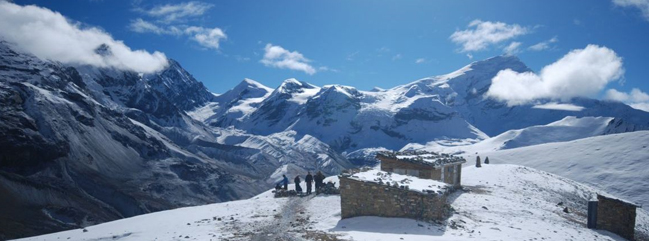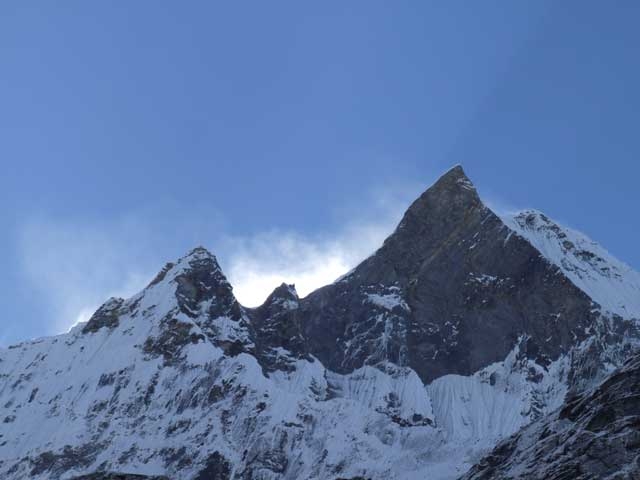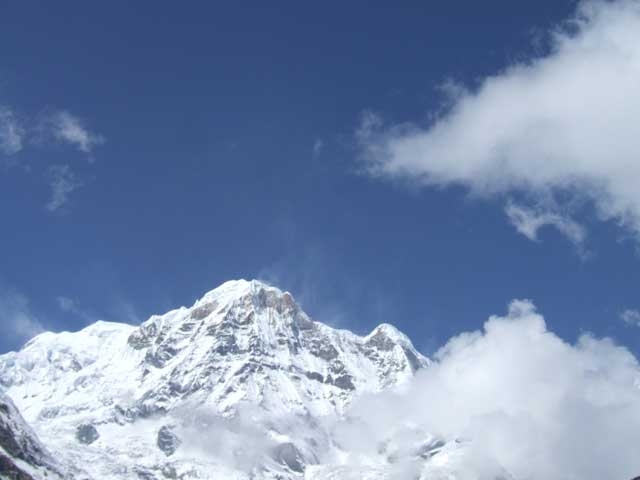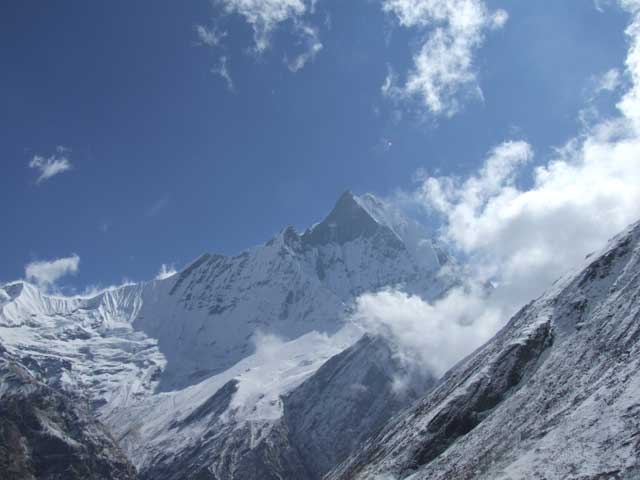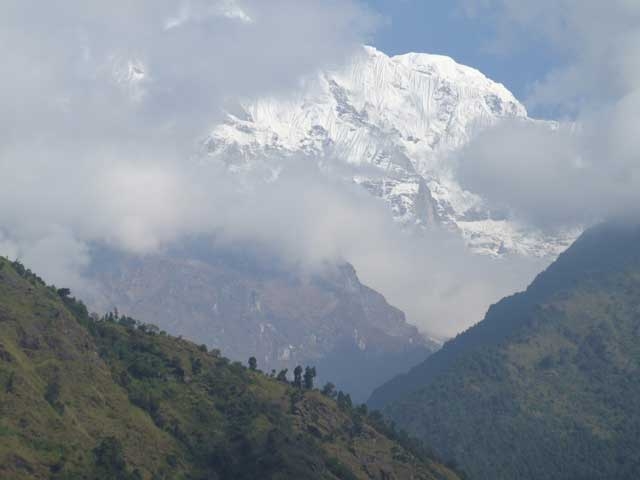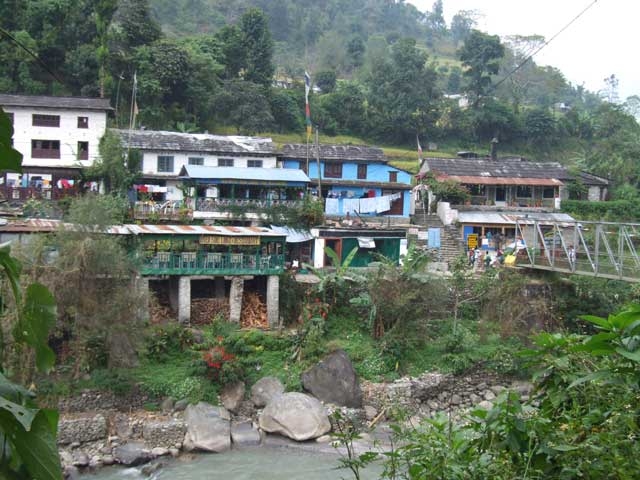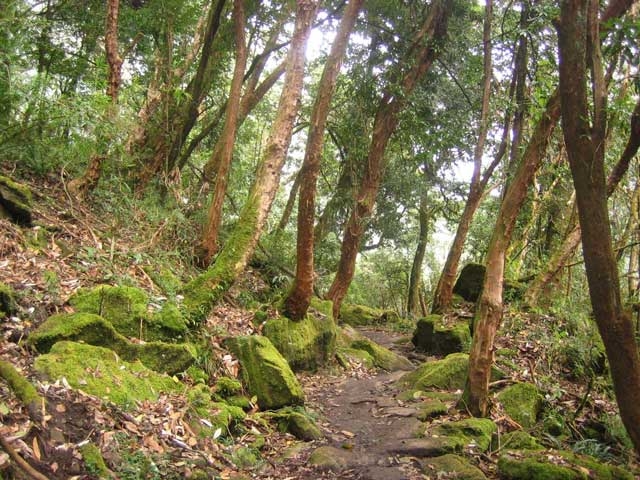This is a panoramic trek to beyond Phewa Lake in Pokhara. From Panchase you will see the great Himalayan peaks of Macchapuchare, Dhaulagiri, Annapurna, Lamjung and Manaslu. The terrain varies from subtropical valleys of banana trees and rice paddies to high ridges covered in rhododendron forest. This supports an abundant array of bird life. Along the way you will see many ethnic mixes, such as Brahmin, Magar and Gurung. This trek is off the beaten path and it is unlikely that you will meet many other trekkers here, and this trek is suitable for all ages and fitness levels.
Panchase Trekking in the world have such a splendid variety of natural beauty as the Annapurna region. It is a rare combination of long arrays of snow-capped peaks, crystal clear lakes, turbulent rivers with deep gorges, Tibetan monasteries, hot-springs, and picturesque villages, inhabited by simple and friendly ethnic people. Being one of the best trekking route offering unique mountains view this trek is less visited by western people so virgin culture & real way of living can be experience trekking in this route.
We drive you to a beautiful city Pokhara to experience its natural beauty and the panoramic views of over 8000 meter high Mt. Annapurna , Manaslu and Dhaulagiri . Always twinkling view of Machhapuchhre (fishtail) is another attraction. The trek to Panchase hill is new destination for those who are looking for something different, less touristy and easy for walking. It is an ideal trip for those who have a short time and like to combine cultural sites of that region.
Few places in the world have such a splendid variety of natural beauty as the Annapurna region. It is a rare combination of long arrays of snow-capped peaks, crystal clear lakes, turbulent rivers with deep gorges, Tibetan monasteries, hot-springs, and picturesque villages, inhabited by simple and friendly ethnic
Day 01 – Arrival in Kathmandu
Upon arrival at Kathmandu International Airport transfer to your hotel in Kathmandu or Bhaktapur. A short briefing will follow concerning the necessary formalities and your itinerary. Depending upon your arrival time you may spend free time visiting nearby sanctuaries or resting.
Day 02 – Sightseeing Cultural Day in Kathmandu
Half day sightseeing around UNESCO Bhaktapur / Kathmandu. Your guide will escort you on a tour of Buddhist and Hindu temples and shrines that reflect the ancient local traditions. There is time to explore the city’s many places of interest on your own or take a rest while trekking permits are finalised. In the evening sample a delicious traditional Nepali dinner. Overnight in Kathmandu.
Day 03 – Kathmandu to Pokhara
Drive or fly to Pokhara. Overnight at hotel near Lake Phewa.
Day 04 – Pokhara-Bhumdi [1520m]
Start the day with a drive to Thado Khola, passing beautiful Davis Falls on the way. Trek to Bhumdi through lush forest teeming with interesting flora and fauna. The trail starts up a long staircase to a ridge before dropping down to Bhumdi. In Bhumdi you will have good views of Himalchuli, Manaslu, Ganesh Himal, Annapurna range and Fishtail. Overnight in Bhumdi. (3-4 hours walking)
Day 05 – Bhumdi-Panchase Bhanjyang [2030m]
If the weather is clear, you will have more opportunities to view the beautiful mountains along the trail. Today’s trek takes us up through forest and then on to Bhanjyang, a small settlement at the foot of Panchase. From here the views over Pokhara Valley and Phewa Lake are awesome. Overnight in Bhanjyang. (5-6 hours of walking)
Day 06 – Panchase Bhanjyang-Panchase Peak-Chitre [1400m]
Hike to the Panchase Hill summit (2500m) for a panoramic view of the Annapurna peaks, Dhaulagiri, and Manaslu. The ruins of the temple at the summit sometimes shelter a holy man. The trek continues uphill steeply through sparse forests and pastures to Chitre, where we overnight. (6-7 hours of walking)
Day 07 – Chitre-Matathanti [1200m]
Today’s trek takes us past scattered villages to the village of Matathanti, where we overnight.
Day 08 – Matathanti / Ghaundrung [1940m]
An easy walk today before an ascent to Ghaundrung, the largest Gurung village in the region. Overnight in Ghaundrung.
Day 09 – Ghaundrung
Take the day in Ghaundrung to rest and enjoy the scenic beauty of the area and the town. Overnight in Ghaundrung.
Day 10 – Ghaundrung-Pothana [1910m]
Start off downhill to Modi Khola, crossing on a suspension bridge. The trail turns uphill to Landrung Village, where Machhapuchhre and Annapurna are visible from the trail. It’s an uphill walk through woodlands to Deurali, then a gradual downhill stretch to Pothana, where we overnight. (5-6 hours walking)
Day 11 – Pothana-Pokhara [820m]
Walk to Damphus, then along the ridge to Phedi, passing rice fields and villages on the way. Then on to Pokhara. (3 hours walking); You’ll have time to relax or explore the Pokhara area. Overnight stay at hotel near Lake Phewa
Day 12 – Pokhara to Kathmandu
Drive or fly back to Kathmandu. Overnight at hotel in the Kathmandu area.
Day 13 – Final Departure
Departure from Nepal or continuation on the next stage of your trip.
NOTE: The above information is a guide and standard template of what we provide. The trek can be customized at your request to accommodate your specific requirements.
Note : On adventure trips of this type, weather, local politics, transport or a multitude of other factors beyond our control can result in a change of itinerary. It is, however, very unlikely that the itinerary would be substantially altered; if alterations are necessary the leader will decide what is the best alternative, taking into consideration the best interests of the whole group. Where a change does occur, we do everything we can to minimize its effect, but we cannot be responsible for the results of changes or delays.
Q.What type of shape do I need to be in, is this trip for me?
A. Trekking is suitable for average people who are moderately fit, thus no previous experience is required. Some physical fitness programs such as running, swimming, hiking is recommended before you embark on your journey. Persons suffering from a pre-existing medical condition or disease must seek medical advice before considering the trek. Whilst on the trek, it is common to experience some discomfort before being fully acclimatized.
To prepare for a strenuous trek you should begin training at least two to three months before your departure. As a guideline, an hour of aerobic exercise three to four times per week would be considered a minimum requirement. The best preparation is bushwalking involving relatively steep ascents and descents. If you can manage a couple of valley floor to ridgeline ascents per comfortable and able to enjoy the trek to the fullest. They are physically strong, sharp-witted and have an incredibly positive attitude towards a life that we would consider extremely tough. There is something about a trek in the Himalaya that draws you back time and time again. For keen walkers it is a paradise and even avowed non-walkers find that one foot just seems to follow the other, drawn by the appeal of what lies beyond.
Q. Will somebody come to pick me up at the Airport upon my arrival?
A. Yes, our Airport Representative will be there to greet you outside of Terminal Hall, he/she will be displaying an Kiwi Adventures Treks & Expedition sign board. Upon arrival, you will be transferred to your hotel.
Q. What sort of accommodation can I expect in Kathmandu and in trekking?
A. 11 night’s Trekking Guesthouse, 4 nights three/four star hotels in Kathmandu.
We use standard rooms from three/four star hotels in Kathmandu with breakfast included. Along the trekking routes teahouses/Lodges generally provide basic clean facilities with a mattress and a quilt or blanket. We can also offer you sleeping bags if needed (which need to return after the trip) but it is a good idea to always have your own sleeping equipment. We usually provide single and double rooms as well as the occasional dormitory. The dining room is downstairs around a fire. All food will be cooked to order in the little kitchen. You should not enter the kitchen unless asked to do so.
Q. What sort of food can I expect in trekking?
A. In trekking most teahouses (lodges) cook a delicious range of mostly vegetarian fare. Pasta, tuna bakes, noodles, potatoes, eggs, dhal bhat, bread, soups, fresh vegetables (variety depends on the season) and even some desserts like apple pies, pancakes, and some interesting attempts at custard. You will find a lot of garlic on the menu because it assists with acclimatization – eat some every day. In many larger villages you may find some meat on the menu. You can always get hot chocolate, tea, and hot lemon drinks, as well as soft drinks, and treats like chocolate and crisps.
Each day dinner and breakfast are used to take in the same lodge you spend the night. Lunch will be taken on the way to destination.
Q. What sort of transportation you use?
A. Kiwi Adventures Treks & Expedition is all about providing you with local insights as well as adventure, with that in mind, where we think you will get more out of your holiday by using different means of transport that is what we do. Using a variety of private transport is an integral part of our Himalaya tours and enhances the experience!
We use private tourist vehicles for sightseeing, city tours and pickups. Depending on the group size we use cars, minibus, van or land cruiser. These small light vehicles are more manoeuvrable and flexible enabling us to take you through the Narrow roads of Nepal. All the vehicles are usually air-conditioned unless we are travelling in cooler areas.
Q. What is the best season for this trekking?
A. Our trekking season extends from mid- September to May. From early September the monsoonal rains decrease. By end of September through to December the weather is usually stable with mild to warm days, cold nights. February, March, April, May, October, November, December are the best time to do trek.
Q. What is the weather & temperature like in trekking?
A. Weather in the mountains is notoriously difficult to predict. At night it is generally cooler the days are generally warm. Winter (January and February) will be bit colder but the days can be quite beautiful and warm if the sun is out. There will be bit of snow during the month of January, February and December. It is also important to make sure that you can stay warm and dry in just about any conditions. Expect the unexpected! The temperature could be as high as 20 deg C to -15 deg C low.
Q. Can I charge my digital camera or other batteries on my trip?
A. These facilities will be available in most of the places in your hotel reception by paying some service charges. Remember to bring your adapters!
Q. Is there any communication while we are on trekking?
A. There are telephones in some villages along the trekking routes from which you can make international calls.
Q. Can I use credit cards in the places visit in trekking?
A. In most cities yes, to some extent, however once you leave those cities behind, all you need is cash.
Q. How much additional money do I need per day?
A. In Kathmandu, you can allocate US$ 10 – 25 for a lunch / dinner. It’s all depends on your spending habits. US$7 to 10 US$ a day will be enough to buy bottles of water, chocolates and few drinks in trekking.
Q. Do I need to tip my guide and porters? How much would that be?
A. This is a difficult thing to gauge. We have seen everything from 20USD to 1000 USD per person for guides and porters. Tipping is not required, but a small way to show your guides and local porters thanks for their help. The level of the tip should reflect the level of personal involvement with your guide.
Q. Is the water OK to drink? Do I need to bring purifying tablets/filter?
A. In most places bottled water is readily available. If you wish to drink normal water, you need to use purifying aid, which you will need to bring with you.
Q. Are the Kiwi Adventures Treks & Expedition staff insured?
A. Our company insures all our trekking staff, including guide, cook, sherpa and porters.
Q. What essential documents do I need to bring with me on tour?
A. *Valid Passport – must be valid for up to 6 months after you return from your tour, keep a separate photocopy.
*Travel insurance, keep a separate photocopy
*Cash and Traveller’s Cheques, keep numbers and proof of purchase separate
*Flight tickets
*Emergency contact numbers for T/C’s, banks, insurance, family contacts.
Q. Can I add extra days to my trekking trip?
A. A hoilday should never be about making it to the final point quickly. Along your trek we can add days at your request with additional costs to cover guides, porters, accommodation and food.
Q. Do you use yaks/porters on the trek or do we carry all of our own gear?
A. Whilst on the trek, our porter will take care of your luggage. All you need to carry is your small day bag for your personal belongings like camera, water bottle, sun cream etc only.
Q. What opportunities will I have for shower along the trek?
A. In major places, we arrange guesthouse with hot shower. And in rest of the places, hotel water in bucket will be provided for shower; it would cost you extra about USD 3-4 per shower.
Q. Do you know about how many total miles the trek is?
A. Total distance of the entire trek is about 75 miles.
Cost Includes
• Airport / Hotel / Airport pick up & drop by private car / van / bus.
• Standard twin sharing accommodation in three/four star hotel in Kathmandu breakfast included.
• Standard twin sharing accommodation in two/three star hotel in Pokhara breakfast included.
• Sightseeing/Monument entrance fees in Kathmandu and Pokhara.
• Guided city tour in Kathmandu and Pokhara by private car / van / bus.
• All your standard Meals during the trek.
• Twin sharing Lodges, Guesthouses accommodation during the trek
• Local Ace the Himalaya licensed English speaking Guide.
• The required number of local staff and Porters to carry your luggage during the trek.
• Food, accommodation, salary, insurance, equipment and medicine for all staff.
• Annapurna conservation Park permits.
• Surface transfer from and to Kathmandu.
• All our government taxes.
• Official expense.
Cost Excludes
• Lunch and dinner whilst in Kathmandu and Pokhara .
• Your travel insurance (compulsory, please contact us if you wish to sign up for the Global Rescue membership plan).
• International airfare and airport departure tax.
• Nepal entry visa, you can obtain a visa easily upon your arrival at Tribhuwan International Airport in Kathmandu. (Tourist Visa with Multiple Entry for 30 days can be obtained by paying US $ 40 or equivalent foreign currency. Similarly, Tourist Visa with Multiple Entry for 90 days can be obtained by paying US $ 100. You will also require 2 passport size photos.)
• Alcoholic, hot and cold drinks.
• Personal trekking Equipment.
• Tips for trekking staff. (Tipping is expected).
• Any others expenses which are not mentioned on Price Includes section.
